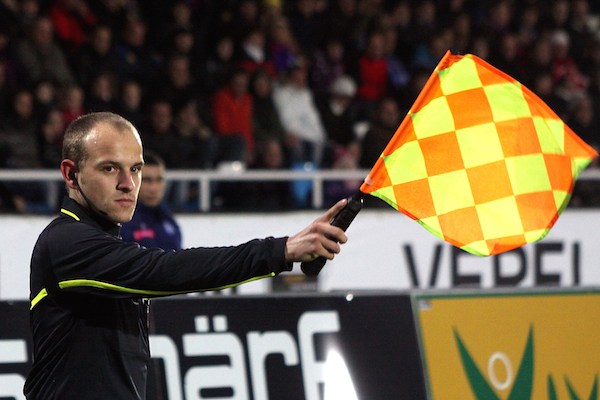Dear Sports Fan,
What is being offside and why does it cause so much screaming in the bar next-door?
Thanks,
Max
Dear Max
Offside rules are about time and space. They are about a line, an event and an order. Although they are probably the most misunderstood, most shouted about, most infuriating rules in sports, they are deceptively simple. Offside rules exist in most of the most-watched sports in the world. Offside is the rule in soccer; it has caused more bloodshed than many major border conflicts or minor religions. It is an important part of hockey, can mean the difference between winning and losing in football, and although it is disguised in basketball, it still has major implications. If you understand the role being offside plays in all of these sports, you will understand a lot about the nature of each game.
In every sport, being offside means that a player is in a position he or she shouldn’t be in when a particular event happens. I’ll repeat it: being offside means that a player is in a position he or she shouldn’t be in when a particular event happens. That’s it. That’s the whole thing. You’ve got it! Now all we need to do is fill in the where and the when.
Hockey
Where: If the player is in the offensive zone; the area between the blue line closest to the goal his team is trying to score on and the boards…
When: The puck is moved from outside this area into this area…
HE IS OFFSIDE!
Soccer
Where: If the player is closer to the goal she is trying to score on than fewer than two players of the opposing team…
When: The ball leaves the foot of a player on her team who intends to pass her the ball…
SHE IS OFFSIDE!
Football
Where: If a player on defense[1] moves across the line of scrimmage (an imaginary line across the field of play where the ball is placed before a play starts…)
When: Before the ball is snapped to start the play…
HE IS OFFSIDE (If the player touches another player on the other team, this is called “encroachment” which is much more fun to say than offside.)
Basketball
Where: If a player is on the side of the court that she is trying to defend…
When: When she has the ball for more than eight seconds after her team initially gains possession of it…
SHE IS OFFSIDE (This is called the “eight-second rule.”)
Where: If a player dribbles the ball on the side of the court that he is trying to defend…
When: After his team has had the ball on the side of the court that they are trying to score on…
HE IS OFFSIDE (This is called a “back-court violation.”)
Notice how the way the offside rule is written seems to suggest something about the game? The soccer rule favors the defense in a big way — if a player can’t pass to one of his teammates unless he has at least two defenders between his teammate and the goal, why are we surprised that there isn’t more scoring? The hockey rule also favors the defense, just a little less. Note how the rule makes it so that if a defender can clear the puck from his third of the ice into the middle third, the other team’s offense needs to totally reset by leaving the offensive zone. Basketball, on the other hand, seems to require offense. If a player cannot stay on her side for more than eight seconds, she’s going to be forced to get her team in a position to score, isn’t she?
See how simple the offside rules can be? What other questions do you have?
Thanks,
Ezra Fischer
- Before a play starts, only one offensive player is allowed to move at once. If any of the big guys in a row even flinch, they are called for a “false start” which is more or less an offside rule.↵


Very clever and informative!
Offsides in soccer is infuriating. If your team is faster than the defender on the other team, you should win!! I get the desire to eliminate cherry picking but the two man rule is ridiculous!
Well — it is an advantage for the defense, but because you are not allowed to be behind the second to last defender when the ball is passed, it actually increases the benefit of speed.
what the hell is a 8 second rule in soccer!!!!!!!!!